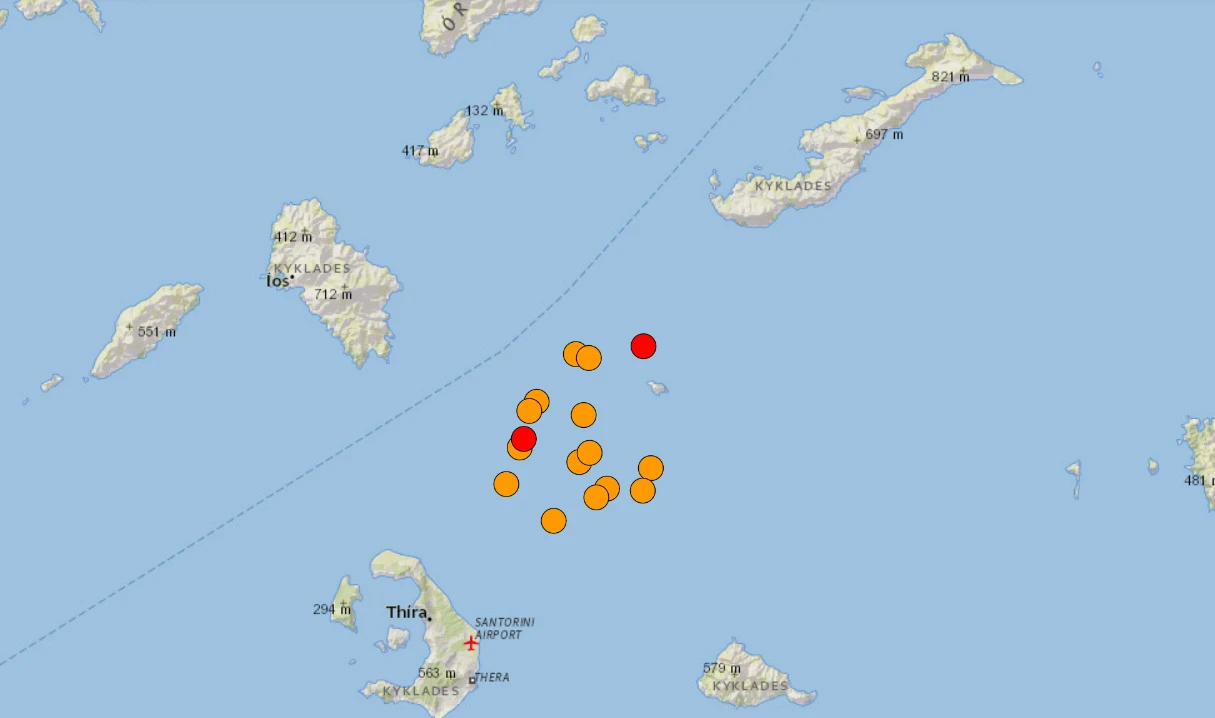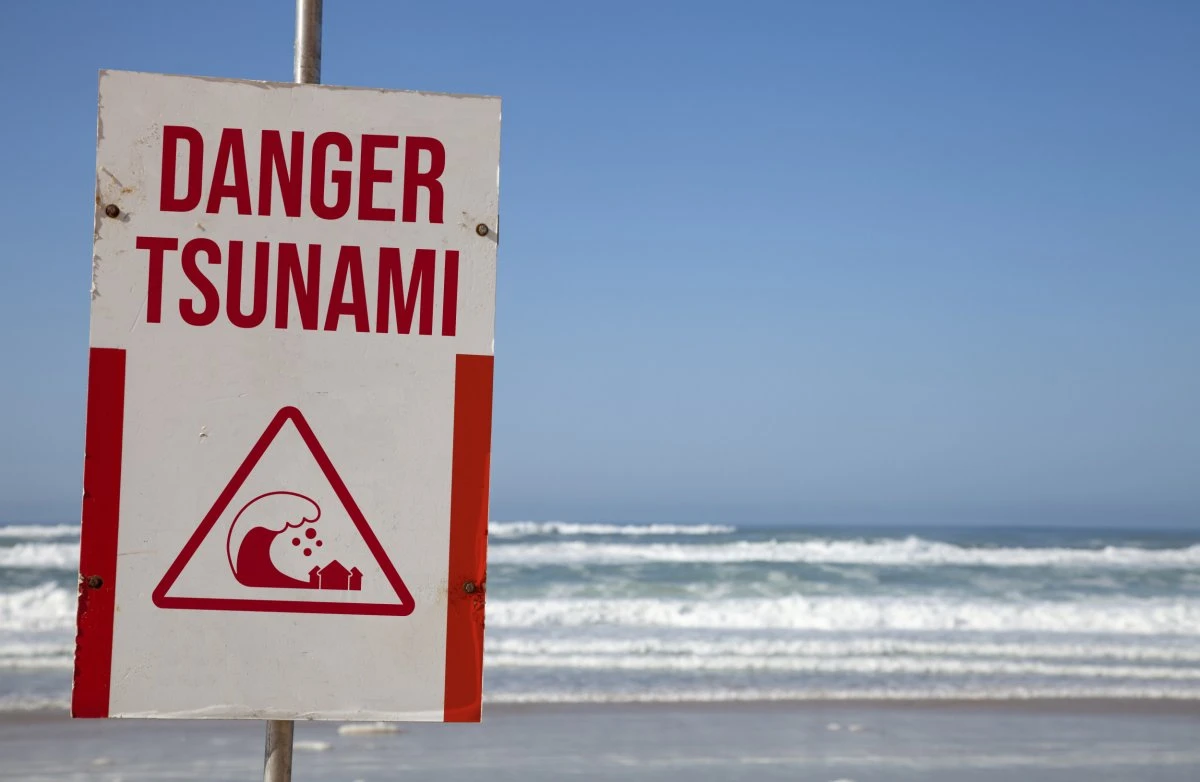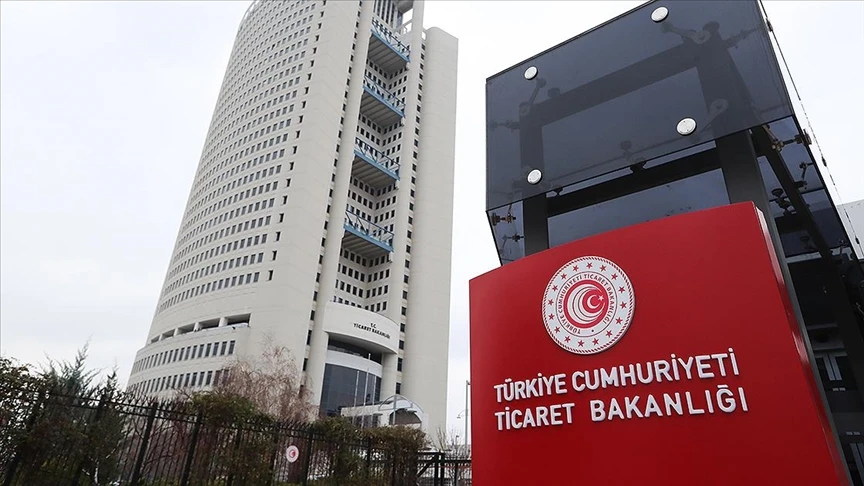Turkish experts discuss Aegean earthquake risks: Are Türkiye’s coastlines safe?
 Tourists in Santorini, Greece, facing the sun and holding their phones, on July 25, 2024. (Photo via X)
Tourists in Santorini, Greece, facing the sun and holding their phones, on July 25, 2024. (Photo via X)
The Aegean Sea region has recently experienced an unprecedented swarm of earthquakes, triggering a widespread scientific investigation.
These tremors, ranging from minor quakes to more significant seismic events, have raised concerns about the possibility of volcanic eruptions in the region. Leading Turkish experts have pointed out that this activity could be linked to magmatic sources, suggesting that Türkiye might not be directly affected, but the coastal areas along the Aegean should still prepare for potential risks such as tsunamis.
Professor Hasan Sozbilir, the Director of the Earthquake Research and Application Center (DAUM) and a faculty member at the Department of Geological Engineering, Faculty of Engineering at Dokuz Eylul University in Izmir, stated that the recent earthquakes in the Aegean Sea are linked to magmatic sources and hydrothermal activity. He further noted that these events are indicative of the beginning of a new volcanic activity.
He pointed out that Türkiye is less likely to be impacted by these tremors. However, he emphasized that if an earthquake larger than magnitude 7 occurs in the region’s underwater faults, tsunami risks must be modeled for the Kusadasi-Bodrum-Datca coastlines, and necessary precautions should be taken.

Recent seismic activity in Aegean Sea
According to data from the Disaster and Emergency Management Authority (AFAD), over 400 earthquakes have occurred in the Aegean Sea since the previous day, with the largest measuring 4.8 in magnitude. Prof. Sozbilir highlighted a seismic swarm north of Santorini Island, with earthquake magnitudes ranging from 3.0 to 4.8.
He explained that the region lies along the active volcanic island arc that extends from the Athens-Santorini-Datca-Bodrum line. This area is known as the South Aegean Volcanic Island Arc, home to active volcanic islands such as Santorini, Milos, and Nisyros. These volcanoes have been associated with frequent earthquakes and volcanic eruptions throughout history.
Seismic faults beneath the sea
Professor Sozbilir also drew attention to the active underwater faults in the region that control volcanic eruptions. These faults, situated beneath the Aegean Sea between Greece and Türkiye, play a significant role in generating earthquakes and relieving regional stress.
Beneath the Aegean crust lies the Aegean Subduction Zone, where the African Plate is subducting beneath the Aegean Plate at a rate of 20 millimeters per year, resulting in frequent earthquakes between Crete and Rhodes.
A new volcanic activity could be emerging
Professor Sozbilir referred to studies conducted by Greek colleagues over the past decade, which identified the Santorini-Amorgos fault system and indicated that it could be linked to potential volcanic activity. He noted that the 1956 Amorgos earthquake, which measured 7.5 in magnitude, generated a surface rupture along the seafloor and caused a tsunami.
Following the earthquake, a second tremor with a magnitude between 6.0 and 7.2 occurred. This earthquake caused significant damage to buildings and resulted in 54 fatalities.
Prof. Sozbilir concluded that the recent seismic activity observed in late January and early February might indicate the triggering of the Santorini-Amorgos fault and other nearby faults. Given the historical context of volcanic eruptions in the region, these recent tremors are considered to be triggered by magmatic sources and hydrothermal activity, potentially signaling the start of a new volcanic event.

Tsunami risk remains low for Türkiye
Despite concerns about the ongoing seismic activity, Professor Sozbilir reassured that Türkiye is unlikely to be directly affected by these tremors due to the distance between the earthquake zones and the Turkish coast. The underwater faults are approximately 150-200 kilometers away from Türkiye’s coastline.
Nevertheless, he stressed that if a major earthquake occurs, the Kusadasi-Bodrum-Datca coastlines should be modeled for tsunami risks and appropriate measures should be implemented.
Seismic storm in the Aegean Sea: What could it mean for Türkiye?
Experts and researchers are closely monitoring the situation, as the earthquakes in the Aegean Sea resemble the seismic storm observed between 2011 and 2012. While past events of similar intensity did not lead to volcanic eruptions, scientists are still analyzing the potential risks posed by these ongoing tremors.
Bulent Ozmen, a seismology expert, warned that a larger earthquake could trigger a tsunami that might impact coastal settlements in Muğla and the surrounding areas. He urged people living near the shorelines to stay cautious, as seismic events in this region can produce tsunami waves.
Geologist Professor Okan Tuysuz also confirmed that over 250 earthquakes had occurred in the past two days, with 26 of them reaching magnitudes above 3.5. He classified this activity as a seismic storm, similar to past events in the region.
He also added that while seismic swarms can last for weeks or even years, they typically produce earthquakes of magnitude 6.0 or lower without triggering major quakes of magnitude 7.0 or higher.

Renowned earthquake expert Professor Naci Gorur advised vigilance of residents in Türkiye’s coastal areas, especially those near the Aegean Sea. As seismic activity in the region continues to intensify, experts urge authorities to remain cautious and prepared for the potential risks posed by larger earthquakes or tsunamis.
The ongoing seismic activity in the Aegean Sea serves as a reminder of the region’s active geological nature, with potential volcanic eruptions and underwater faults playing key roles in shaping the future of these tremors.



